Let’s be honest – picking a cooking oil these days can feel a little overwhelming. With so many choices like olive, avocado, coconut, and canola, it’s hard to know what’s actually good for you. But don’t worry, we’re breaking it all down in simple terms. Whether you’re frying, baking, or just drizzling over a salad, we’ll help you find the best oil for your health and your taste buds.

1. Extra Virgin Olive Oil
Olive oil, especially extra virgin, is widely recognized for its role in Mediterranean-style diets. It’s made by cold-pressing olives and contains mostly monounsaturated fats, which are considered better for heart health when used in place of saturated fats. It’s not ideal for very high-heat cooking because of its lower smoke point, but it works well for moderate-heat cooking and as a finishing oil. While it contains some natural antioxidants and plant compounds, the overall health benefit depends on how it’s used and in what quantities. Its flavor ranges from mild to peppery depending on the brand and origin.
Key Highlights:
- High in monounsaturated fats
- Contains small amounts of antioxidants and polyphenols
- Commonly used in Mediterranean diets
- May support heart health when used in place of saturated fats
- Not ideal for high-heat frying due to smoke point limitations
Best Used For:
- Sautéing over medium heat
- Drizzling on vegetables or salads
- Dips and dressings
- Light pan-frying
- Cooking grains or legumes
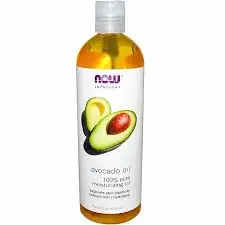
2. Avocado Oil
Avocado oil is extracted from the flesh of avocados and is composed primarily of monounsaturated fats. It has one of the highest smoke points among cooking oils, making it suitable for high-heat methods like frying or grilling. It has a mild, slightly buttery taste and can be used both in cooking and in uncooked dishes. Like other plant-based oils, it doesn’t provide fiber or protein, but its fat composition is seen as favorable for everyday use. Avocado oil is minimally processed if labeled as unrefined, which can help retain some of its natural plant compounds.
Key Highlights:
- High smoke point (suitable for high-heat cooking)
- Primarily monounsaturated fats
- Mild, neutral flavor
- May retain some plant-based nutrients if unrefined
- Typically more stable than many other oils when heated
Best Used For:
- Stir-frying and deep frying
- Grilling meats or vegetables
- Roasting at high temperatures
- Salad dressings
- Baking as a butter alternative

3. Canola Oil
Canola oil comes from a variety of the rapeseed plant that has been bred to be low in erucic acid. It is widely used because it has a neutral taste and a relatively high smoke point. It contains a balance of monounsaturated and polyunsaturated fats, including omega-3 and omega-6 fatty acids. While canola oil is often refined, it still retains a favorable fat profile. Some debate exists around its level of processing, but reputable sources like Mayo Clinic recognize it as a generally healthy choice when used in moderation.
Key Highlights:
- Neutral flavor
- Good source of monounsaturated fats
- Contains omega-3 and omega-6 fatty acids
- High smoke point
- Common in commercial and home kitchens
Best Used For:
- Baking
- Frying and sautéing
- Salad dressings
- Cooking eggs
- Light grilling
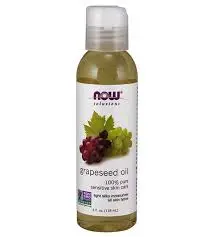
4. Grapeseed Oil
Grapeseed oil is a byproduct of winemaking and is made from the seeds of grapes. It’s mainly composed of polyunsaturated fats, including omega-6 fatty acids. While omega-6s are essential, they are already common in the Western diet, so balance with other fats is recommended. Grapeseed oil has a neutral flavor and a relatively high smoke point, which makes it versatile. It doesn’t offer many unique nutrients, but its light texture is popular for both cooking and cosmetic use.
Key Highlights:
- Mostly polyunsaturated fat
- Neutral taste
- Versatile for various cooking techniques
- Byproduct of wine production
- May contribute to omega-6 intake
Best Used For:
- Roasting vegetables
- Light frying
- Baking
- Salad dressings
- Marinades
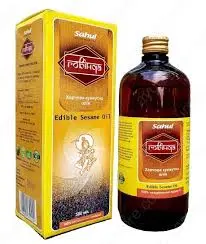
5. Sesame Oil
Sesame oil is derived from sesame seeds and comes in two varieties: light (untoasted) and dark (toasted). The light version has a mild flavor and higher smoke point, suitable for frying, while the dark version is richer and better used in small amounts for flavor. It contains a mix of polyunsaturated and monounsaturated fats. Sesame oil has been used traditionally in many Asian cuisines and is also recognized for some naturally occurring antioxidants like sesamol and sesamin, though these are present in small amounts.
Key Highlights:
- Available in both toasted and untoasted forms
- Contains a mix of unsaturated fats
- Distinct flavor, especially toasted type
- May contain natural antioxidants in small amounts
- Used traditionally in Asian cooking
Best Used For:
- Stir-frying
- Salad dressings
- Noodle dishes
- Marinades
- Finishing oil for flavor

6. Flaxseed Oil
Flaxseed oil is extracted from flax seeds and is unique among cooking oils due to its high concentration of alpha-linolenic acid (ALA), a type of plant-based omega-3 fatty acid. However, it has a very low smoke point and is not heat-stable, so it’s not suitable for cooking. Instead, it’s best used in cold applications. Flaxseed oil is highly sensitive to light and air and should be stored in the refrigerator to prevent oxidation. While it’s not an all-purpose oil, it can be beneficial when used correctly in a balanced diet.
Key Highlights:
- High in ALA (plant-based omega-3s)
- Low smoke point – unsuitable for cooking
- Sensitive to heat, light, and air
- Should be refrigerated after opening
- May help balance omega-6 to omega-3 ratio in the diet
Best Used For:
- Salad dressings
- Smoothies
- Cold sauces or dips
- Drizzling over cooked grains or vegetables
- Supplementing omega-3 intake

7. Walnut Oil
Walnut oil is derived from whole walnuts and is known for its rich, nutty flavor. It is primarily made up of polyunsaturated fats, including ALA, a plant-based omega-3 fatty acid. Similar to flaxseed oil, walnut oil is not stable at high temperatures, making it a poor choice for cooking. It’s typically used as a finishing oil or in cold dishes. It is often unrefined and should be kept in a cool, dark place or refrigerated. Its strong flavor pairs well with other earthy or slightly sweet ingredients.
Key Highlights:
- Contains ALA, a plant-derived omega-3
- High in polyunsaturated fats
- Best used raw or minimally heated
- Sensitive to oxidation
- Rich, nutty flavor
Best Used For:
- Salad dressings
- Finishing oil for cooked dishes
- Dips and spreads
- Cold pasta or grain salads
- Mixing with yogurt or cottage cheese

8. Peanut Oil
Peanut oil, also known as groundnut oil, is made from pressed peanuts and is popular in Asian and Southern U.S. cuisines. It has a high smoke point, making it suitable for deep frying and stir-frying. It contains mostly monounsaturated and polyunsaturated fats. Refined peanut oil has a neutral taste, while unrefined varieties retain more of the peanut flavor. Though it’s often avoided by those with peanut allergies, highly refined versions may not trigger allergic reactions in most cases (though this should always be confirmed individually).
Key Highlights:
- High smoke point
- Common in high-heat cooking techniques
- Mostly unsaturated fats
- Available in refined and unrefined forms
- Refined versions may be tolerated by some with peanut allergies (not guaranteed)
Best Used For:
- Deep frying
- Stir-frying
- Grilling meats
- Roasting vegetables
- Asian-style dressings and sauces
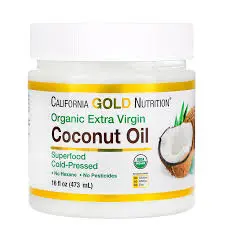
9. Coconut Oil
Coconut oil is extracted from the meat of mature coconuts and is composed mostly of saturated fats, particularly lauric acid. Unlike many other plant-based oils, it remains solid at room temperature. There’s ongoing debate about its health effects due to its high saturated fat content. While some traditional diets include coconut oil, health authorities recommend using it in moderation and focusing more on unsaturated fats for heart health. Virgin coconut oil has a strong coconut flavor, while refined versions are more neutral.
Key Highlights:
- High in saturated fat
- Solid at room temperature
- Composed largely of lauric acid
- Distinct flavor (virgin), neutral (refined)
- Not recommended as a primary cooking fat by some health organizations
Best Used For:
- Baking (as a butter substitute)
- Light sautéing
- Vegan dessert recipes
- Popcorn topping
- Adding texture to smoothies

10. Sunflower Oil
Sunflower oil is made from pressed sunflower seeds and is available in different varieties, including high-oleic and standard types. High-oleic sunflower oil contains more monounsaturated fats and is more stable at high temperatures, making it better suited for cooking. The standard version has a higher amount of polyunsaturated fats and is less stable. Sunflower oil has a light flavor and is often used in commercial food production as well as home kitchens. It’s widely available but should be used mindfully due to the omega-6 content in certain varieties.
Key Highlights:
- Available in different fat profiles (standard vs. high-oleic)
- Neutral flavor
- Suitable for various cooking methods depending on type
- Rich in vitamin E
- Often used in packaged foods
Best Used For:
- Frying (high-oleic variety)
- Roasting
- Baking
- Salad dressings
- Mayonnaise and sauces

11. Safflower Oil
Safflower oil is extracted from the seeds of the safflower plant and is available in two main varieties: high-linoleic and high-oleic. The high-linoleic version is rich in polyunsaturated fats, while the high-oleic type contains more monounsaturated fats, offering better stability for cooking. Both types have a neutral flavor, making them versatile in various culinary applications. The high-oleic variety is particularly suitable for high-heat cooking due to its stability. Safflower oil is commonly used in processed foods and is also available for home cooking.
Key Highlights:
- Available in high-linoleic (polyunsaturated) and high-oleic (monounsaturated) forms
- Neutral flavor profile
- High-oleic variety has a higher smoke point, suitable for high-heat cooking
- Commonly used in commercial food production
- Rich in unsaturated fats, depending on the variety
Best Used For:
- Stir-frying (high-oleic variety)
- Baking
- Salad dressings
- Sautéing
- Roasting vegetables
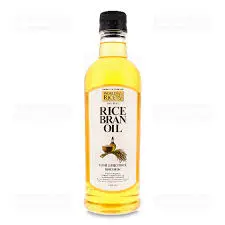
12. Rice Bran Oil
Rice bran oil is extracted from the outer layer of rice grains, known as the bran. It has a balanced composition of monounsaturated and polyunsaturated fats and contains compounds like oryzanol, which may have antioxidant properties. With a high smoke point, rice bran oil is suitable for various cooking methods, including deep-frying. Its mild flavor doesn’t overpower dishes, making it a versatile choice in the kitchen.
Key Highlights:
- Balanced fat composition (monounsaturated and polyunsaturated fats)
- Contains oryzanol, which may have antioxidant properties
- High smoke point, suitable for high-heat cooking
- Mild, neutral flavor
- Commonly used in Asian cuisines
Best Used For:
- Deep-frying
- Stir-frying
- Sautéing
- Baking
- Salad dressings
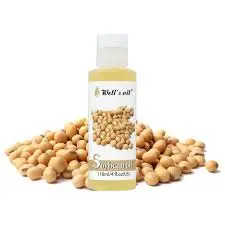
13. Soybean Oil
Soybean oil is derived from soybeans and is widely used in cooking and food production. It contains a mix of polyunsaturated and monounsaturated fats, including omega-3 and omega-6 fatty acids. Soybean oil has a relatively high smoke point, making it suitable for various cooking methods. However, it is often highly processed and may contain trans fats if partially hydrogenated, so it’s important to choose non-hydrogenated versions.
Key Highlights:
- Contains both omega-3 and omega-6 fatty acids
- High smoke point, suitable for high-heat cooking
- Widely used in commercial food production
- Often highly processed; non-hydrogenated versions are preferable
- Neutral flavor
Best Used For:
- Frying
- Baking
- Sautéing
- Salad dressings
- Marinades
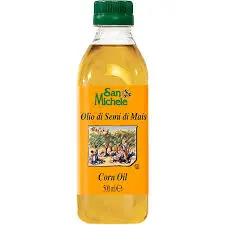
14. Corn Oil
Corn oil is extracted from the germ of corn kernels and is commonly used in cooking and processed foods. It is high in polyunsaturated fats, particularly omega-6 fatty acids. Corn oil has a high smoke point, making it suitable for frying and other high-heat cooking methods. However, due to its high omega-6 content, it’s recommended to balance its intake with omega-3-rich foods.
Key Highlights:
- High in polyunsaturated fats, especially omega-6 fatty acids
- High smoke point, suitable for high-heat cooking
- Commonly used in processed foods
- Neutral flavor
- Requires balanced consumption with omega-3 sources
Best Used For:
- Deep-frying
- Baking
- Sautéing
- Salad dressings
- Marinades
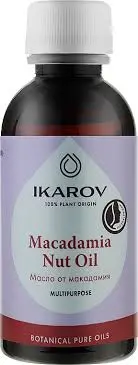
15. Macadamia Nut Oil
Macadamia nut oil is derived from macadamia nuts and is rich in monounsaturated fats, which are considered heart-healthy. It has a high smoke point and a mild, buttery flavor, making it suitable for various cooking methods. Macadamia nut oil is less commonly used due to its higher cost but offers a unique flavor profile and nutritional benefits.
Key Highlights:
- High in monounsaturated fats
- High smoke point, suitable for high-heat cooking
- Mild, buttery flavor
- Less commonly used due to higher cost
- Contains antioxidants like tocotrienols
Best Used For:
- Sautéing
- Baking
- Salad dressings
- Roasting vegetables
- Drizzling over cooked dishes
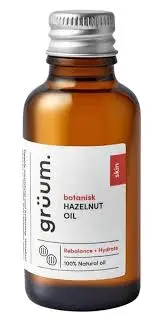
16. Hazelnut Oil
Hazelnut oil is extracted from roasted or cold-pressed hazelnuts and has a distinctive nutty, slightly sweet aroma. It is rich in monounsaturated fats and contains small amounts of vitamin E and other antioxidants. Because of its lower smoke point, hazelnut oil is typically used in cold preparations or added to dishes after cooking. It is more commonly used for flavor enhancement rather than for its cooking versatility.
Key Highlights:
- High in monounsaturated fats
- Contains vitamin E and antioxidants
- Strong nutty flavor
- Low smoke point – best used raw
- Often cold-pressed for maximum nutrient retention
Best Used For:
- Salad dressings
- Drizzling over cooked vegetables or grains
- Finishing oil for desserts or cheese plates
- Baking (as a flavor enhancer)
- Cold pasta dishes
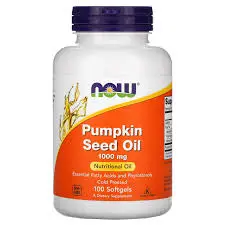
17. Pumpkin Seed Oil
Pumpkin seed oil is cold-pressed from roasted pumpkin seeds and is deep green in color with a strong, nutty aroma. It is rich in polyunsaturated fats, including linoleic acid, and contains small amounts of antioxidant compounds. Due to its low smoke point, it should not be heated. It’s typically used for finishing or in cold dishes. The distinctive flavor can complement both savory and sweet recipes.
Key Highlights:
- High in polyunsaturated fats
- Distinctive green color and nutty taste
- Low smoke point – not suitable for heating
- Contains antioxidant compounds
- Often used in Central European cuisines
Best Used For:
- Salad dressings
- Finishing oil for soups
- Drizzling over roasted vegetables or potatoes
- Cold pasta or grain dishes
- Adding to yogurt or cottage cheese
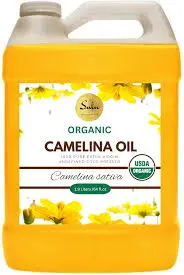
18. Camelina Oil
Camelina oil, also known as false flax oil, is derived from the seeds of the camelina plant, a member of the mustard family. Camelina oil has a favorable omega-3 to omega-6 ratio and is rich in alpha-linolenic acid (ALA). Its smoke point allows for light cooking, but it is best used in cold applications like dressings to preserve its nutrients. It has a mild, earthy flavor and is gaining popularity as a cold or low-heat cooking oil.
Key Highlights:
- High in ALA (omega-3 fatty acids)
- More stable than flaxseed oil
- Balanced omega-3 to omega-6 ratio
- Mild, earthy flavor
- Increasingly used in culinary and nutritional contexts
Best Used For:
- Light sautéing
- Salad dressings
- Dips and spreads
- Drizzling over cooked vegetables
- Adding to smoothies
Conclusion
When it comes to choosing the best cooking oil for your health, there’s no one-size-fits-all answer. Each oil has its own strengths depending on how you’re cooking, what flavors you like, and your nutritional needs. Some oils, like olive or avocado oil, are great all-rounders, while others like flaxseed or walnut oil are better suited for cold dishes where you can really preserve their nutrients.
The key takeaway? Mix it up. Using a variety of oils in your kitchen can help you get a good balance of healthy fats while also keeping your meals interesting. Just remember to pay attention to how you use them – some oils are better for high heat, others are best used raw. Listen to your body, keep your diet balanced, and enjoy the process of discovering what works best for you.
FAQ
1. What is the healthiest cooking oil overall?
There isn’t one single “healthiest” oil – different oils have different benefits. Olive oil, especially extra virgin, is a great all-purpose choice because of its heart-healthy fats and antioxidants. But it’s best to use a mix of oils to get a range of nutrients and benefits.
2. Which oils are best for high-heat cooking?
For high-heat methods like frying or roasting, go with oils that have a high smoke point, such as avocado oil, refined canola oil, or high-oleic sunflower oil.
3. Are saturated fats in cooking oils bad for you?
Not necessarily. Saturated fats, like those found in coconut oil or ghee, can be part of a balanced diet when used in moderation. What matters most is your overall fat intake and the balance of fats in your meals.
4. Should I avoid seed oils like canola or sunflower?
Seed oils have gotten some mixed opinions, but refined versions are generally safe when used in moderation. The key is to balance them with oils higher in omega-3s, like flaxseed or walnut oil, and avoid excessive processed foods that already contain high amounts of omega-6 oils.
5. Can I reuse cooking oil?
Reusing oil once or twice for frying is generally okay, but make sure to strain it and store it properly. However, repeatedly heating oil – especially at high temperatures – can lead to the formation of unhealthy compounds.
6. What oils should be used raw or unheated?
Oils like flaxseed, walnut, hemp seed, and pumpkin seed oil are sensitive to heat and should be used in cold dishes like salads, dips, or as a finishing drizzle. Heating them can destroy their nutrients and change their flavor.
7. Are flavored or infused oils healthy?
Infused oils can be healthy if the base oil is good quality and the infusion ingredients are safe (like herbs or garlic). Just be cautious of storage and shelf life – some infused oils can spoil faster than plain ones.
8. How should I store cooking oils to keep them fresh?
Most oils do best in a cool, dark place, tightly sealed. Some oils, especially unrefined ones like flaxseed or walnut, should be kept in the fridge. Always check the label and give oils a quick sniff – if they smell off, they may have gone rancid.

Leave a Reply